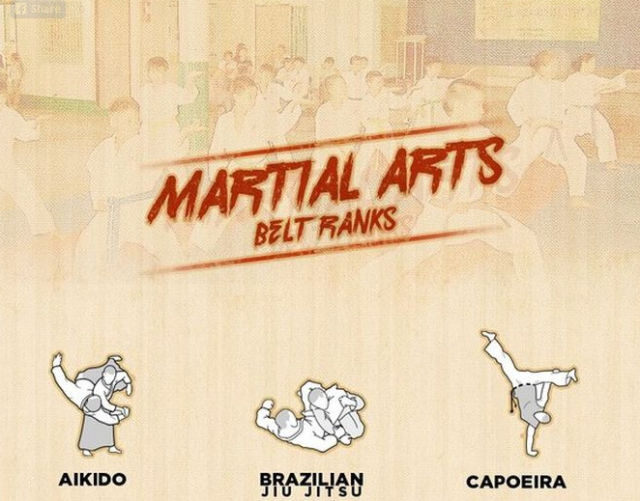The Background And Philosophy Of Martial Arts: A Deep Dive
The Background And Philosophy Of Martial Arts: A Deep Dive
Blog Article
Write-Up Created By-Gentry Mcintyre
Step into the ancient globe where martial arts were born out of necessity in diverse areas. Cultures crafted one-of-a-kind fighting styles linked with historical contexts. Strategies progressed over centuries through dedicated technique and cultural exchanges. Today, contemporary martial arts blend conventional components for optimal efficiency. Philosophically, martial arts highlight discipline, self-improvement, and consistency. Respect, humility, and balance are foundational concepts assisting specialists towards development and resilience. Explore the depths of this abundant history and viewpoint to discover the profound impacts forming this enduring technique.
Beginnings of Martial Arts
Martial arts came from different regions around the world, progressing as practical battle systems to resist dangers. These old battling styles were created out of need, with each culture crafting methods suited to their special settings and obstacles. From the grappling arts of Jujutsu in Japan to the striking techniques of Martial art in China, martial arts were deeply intertwined with the historic, social, and cultural fabric of their respective cultures.
In Japan, the samurai course refined martial arts like Kenjutsu, the art of the sword, which later developed right into the more popularized kind of Kendo. Meanwhile, in Brazil, Capoeira emerged as a mix of dance and fight, developed by enslaved Africans as a means to withstand oppression. Each fighting style brings with it a rich background and philosophy, showing the values and ideas of the people that exercised them.
As you delve into the origins of martial arts, you discover a tapestry of human ingenuity, strength, and the stubborn spirit of warriors throughout time.
Development of Techniques
With centuries of method and refinement, fight strategies within numerous martial arts have undergone an extensive advancement. From ancient designs like Martial art and Martial arts to much more modern-day techniques such as Brazilian Jiu-Jitsu and Krav Maga, the advancement of techniques has been driven by a mix of cultural influences, practical applications, and technological developments.
Recommended Resource site of this evolution is the cross-pollination of strategies between different martial arts. For example, techniques from traditional Japanese Jiu-Jitsu were included into the creation of Judo by Jigoro Kano in the late 19th century. https://cons-of-martial-arts-for64219.like-blogs.com/27541679/equipping-body-and-mind-enhancing-durability-via-protection-and-mental-health-and-wellness-training of designs has actually led to the growth of crossbreed martial arts like Mixed Martial Arts (MIXED MARTIAL ARTS), which incorporate elements of striking, grappling, and entry methods.
In addition, the development of methods has actually been shaped by the enhancing focus on effectiveness and effectiveness in fight. Professionals have actually constantly sought to fine-tune their methods via extensive training, trial and error, and competitors, causing the advancement of extremely specialized and effective battling styles. Generally, the development of methods in martial arts shows the dynamic nature of fight and the recurring mission for improvement and development.
Thoughtful Foundations
Discovering the underlying philosophical principles of martial arts gives insight into their core worths and directing beliefs. At the heart of many martial arts disciplines is the concept of discipline itself. By training your mind and body to function as one cohesive device, you grow self-control that prolongs beyond the dojo or fitness center right into everyday life. This discipline encompasses regard, humbleness, and self-constraint, shaping not just your physical capacities yet likewise your character.
One more basic thoughtful foundation in martial arts is the concept of continual self-improvement. The trip of grasping a martial art is never-ending, with professionals regularly aiming to much better themselves, both physically and mentally. what age to start kids in martial arts on growth cultivates durability, perseverance, and a growth frame of mind that can be applied to all facets of life.
Additionally, martial arts emphasize the value of harmony and equilibrium. Methods are designed to use a challenger's power versus them, highlighting the principle of generating and rerouting force rather than meeting it head-on. This philosophy encompasses interpersonal partnerships, advertising calm resolutions and mutual understanding. By welcoming these thoughtful structures, martial musicians not only enhance their battle skills but also grow a lifestyle fixated personal growth, respect, and harmony.
Conclusion
In conclusion, the background and approach of martial arts offer a rich tapestry of custom, technique, and self-improvement.
Take for instance the story of Bruce Lee, who reinvented martial arts by mixing various designs and philosophies to produce his own special kind of Jeet Kune Do.
Through dedication and development, martial musicians continue to push limits and motivate others to reach their complete capacity both in battle and in life.
